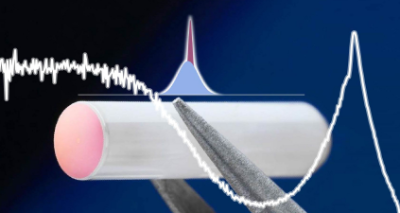Nonlinear optical filtering reduces timing jitter of laser pulses
Nonlinear optical Kerr-cavity soliton dynamics can significantly improve the noise suppression and filter characteristics of a high-Q cavity by keeping information about the intracavity waveform longer than the cavity’s energy storage time. This surprising effect creates new opportunities for microresonator frequency combs and microwave photonics.

The capability to store light for extended periods of time enables optical cavities to act as narrowband optical filters, whose linewidth corresponds to the cavity’s inverse energy storage time. Nonlinear optical soliton dynamics can keep information about the intracavity waveform longer than the cavity’s energy storage time, thereby giving rise to a filter width that can be more than an order of magnitude below the cavity’s intrinsic linewidth. Such nonlinear optical filtering can find immediate applications in optical metrology, and low-timing jitter ultrashort optical pulse generation. This observation creates new opportunities for microwave photonics, microresonator frequency combs and fundamental studies of nonlinear soliton phenomena.
Reference:
Nonlinear filtering of an optical pulse train using dissipative Kerr solitons; Victor Brasch, Ewelina Obrzud, Steve Lecomte, Tobias Herr; Optica, 2019; DOI: 10.1364/OPTICA.6.001386